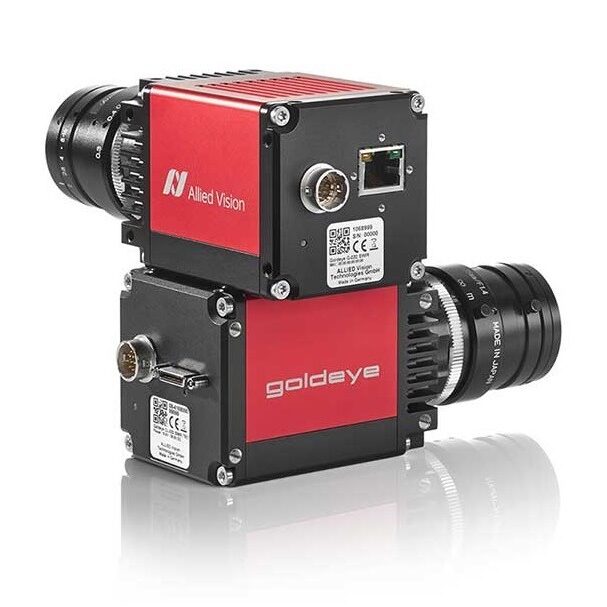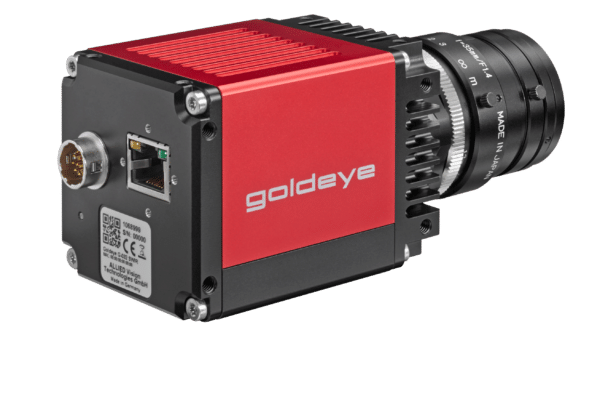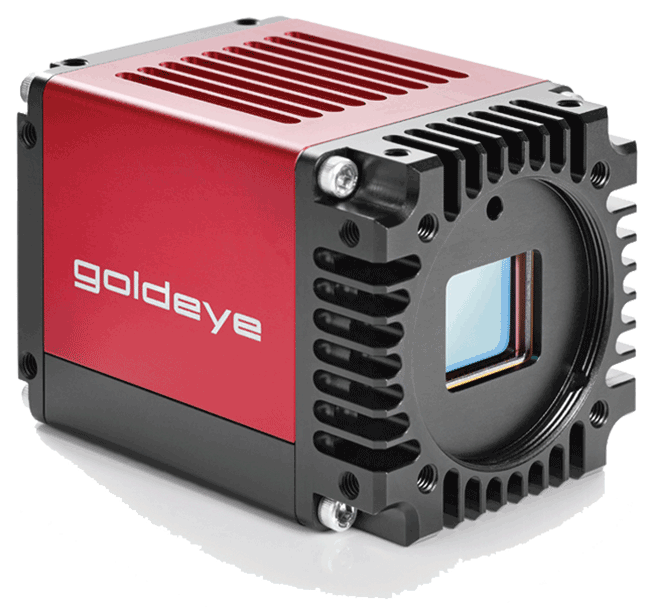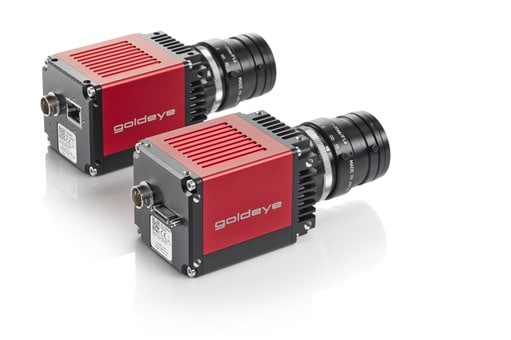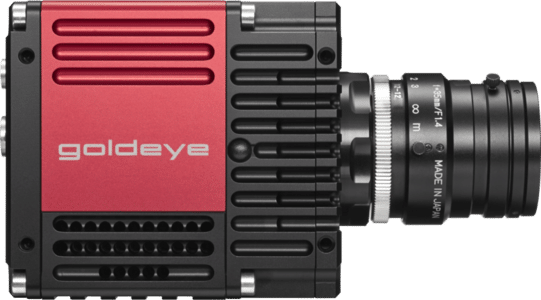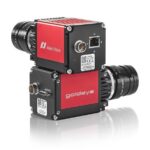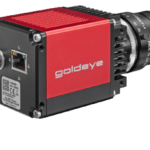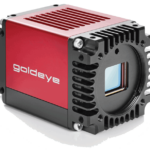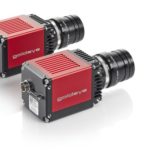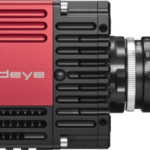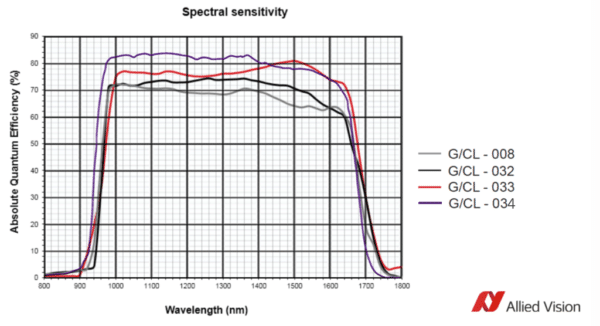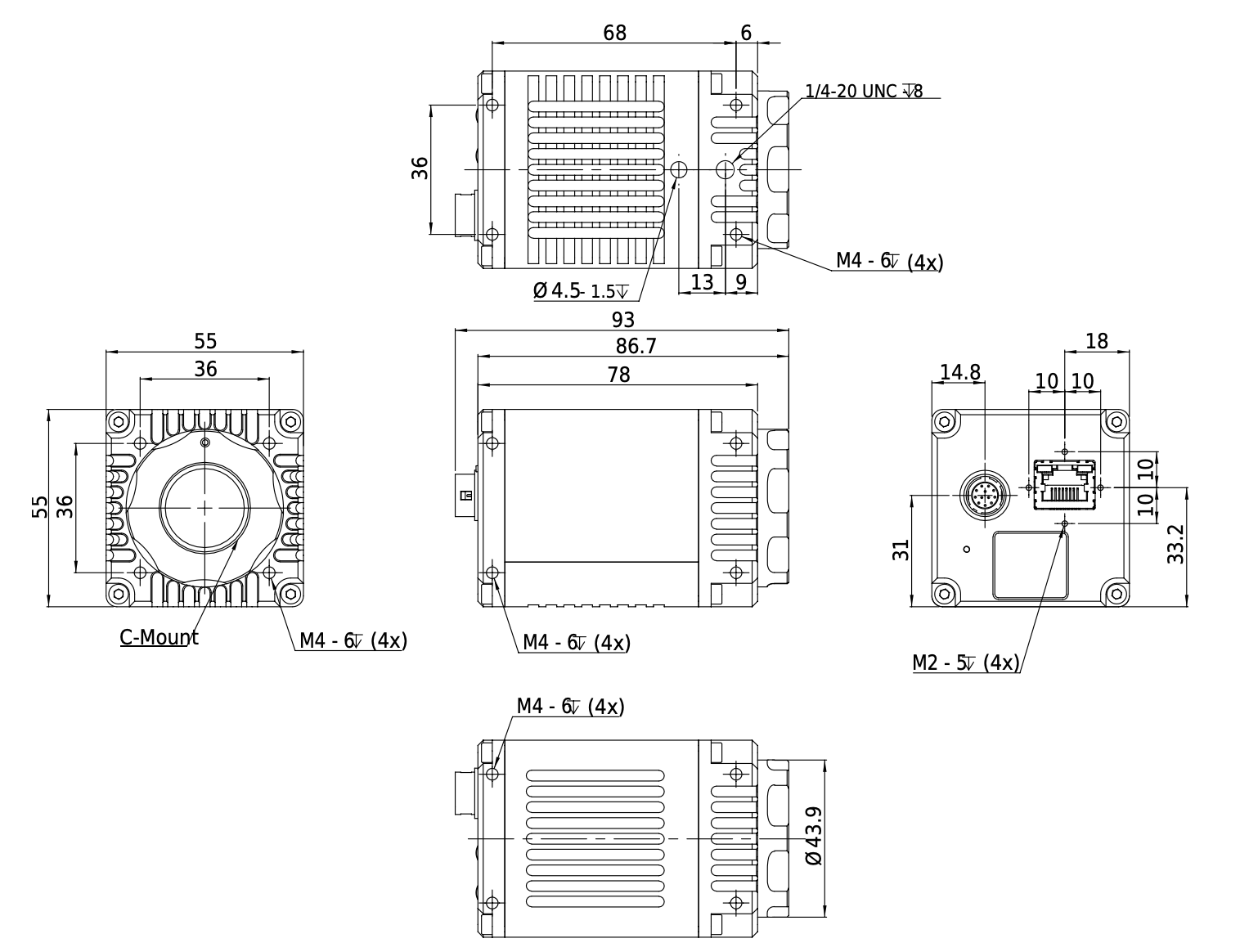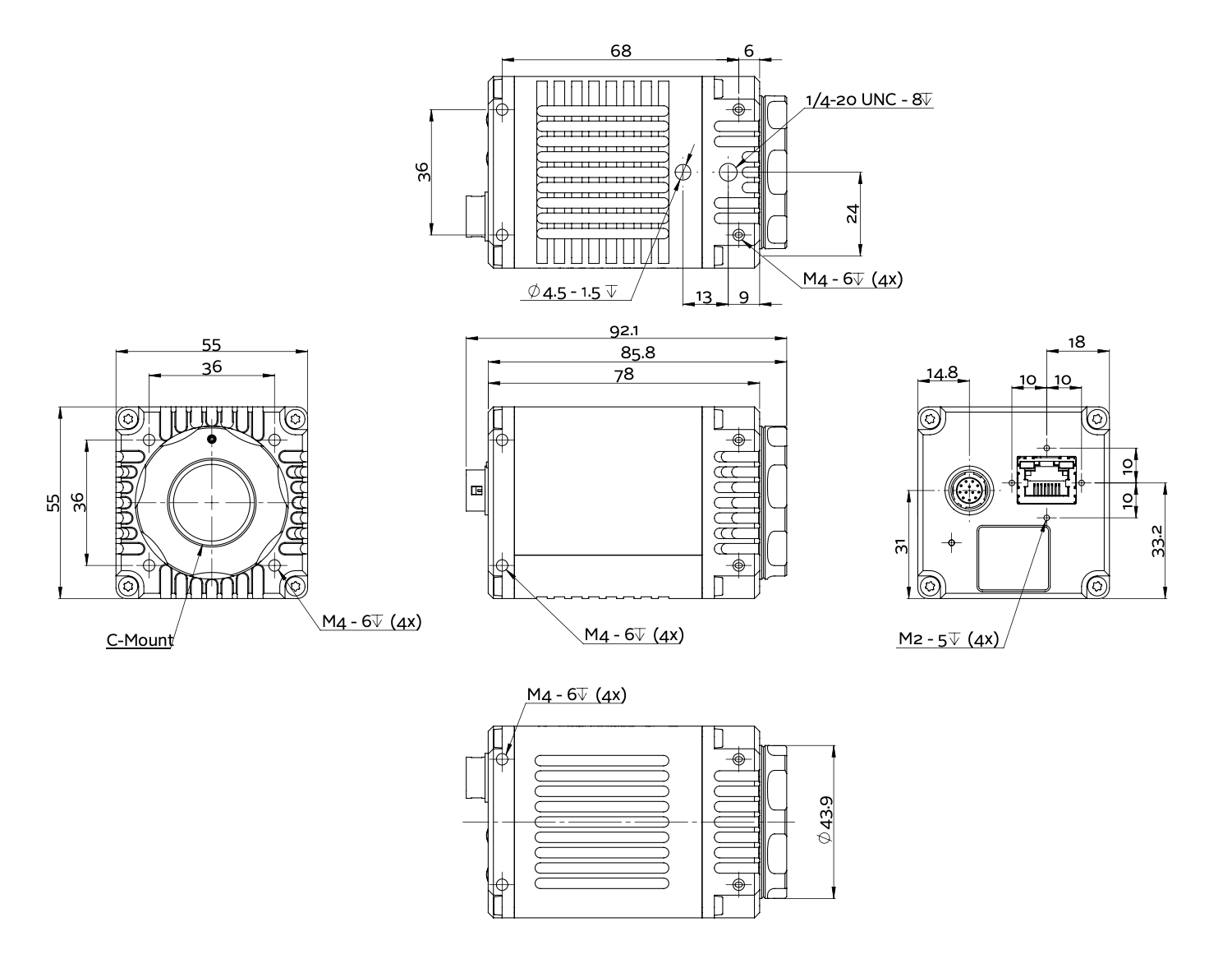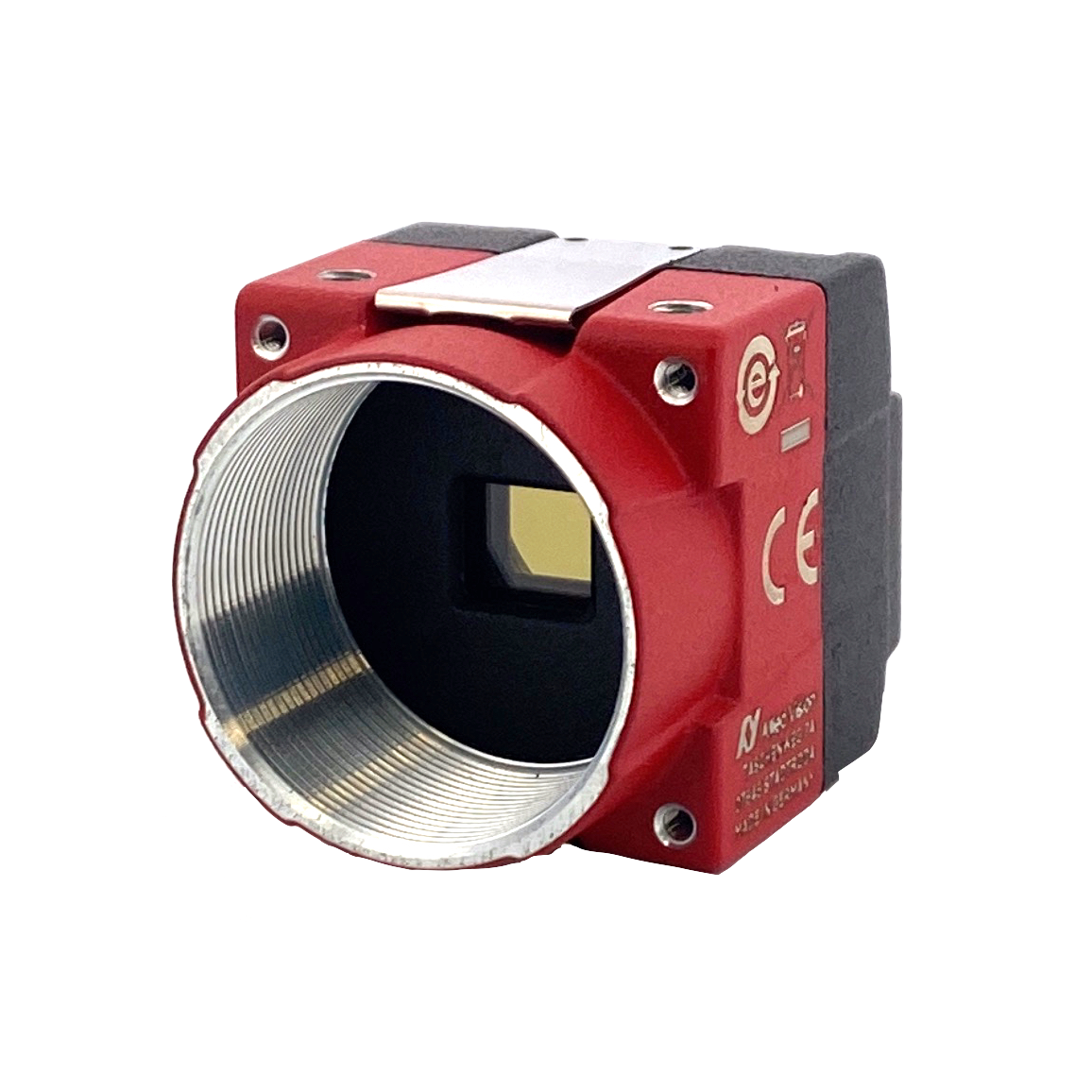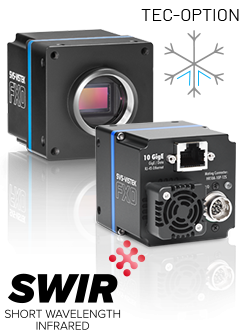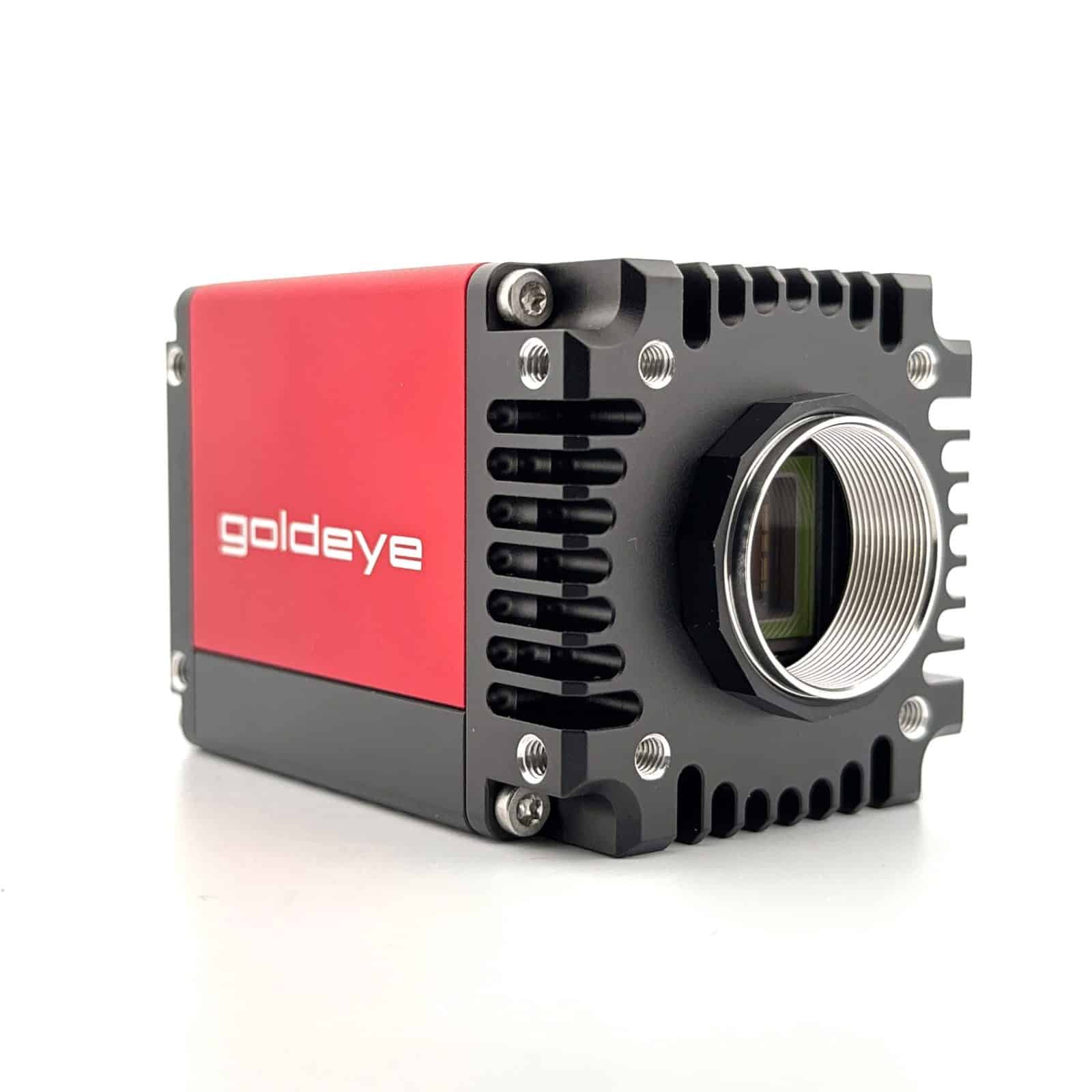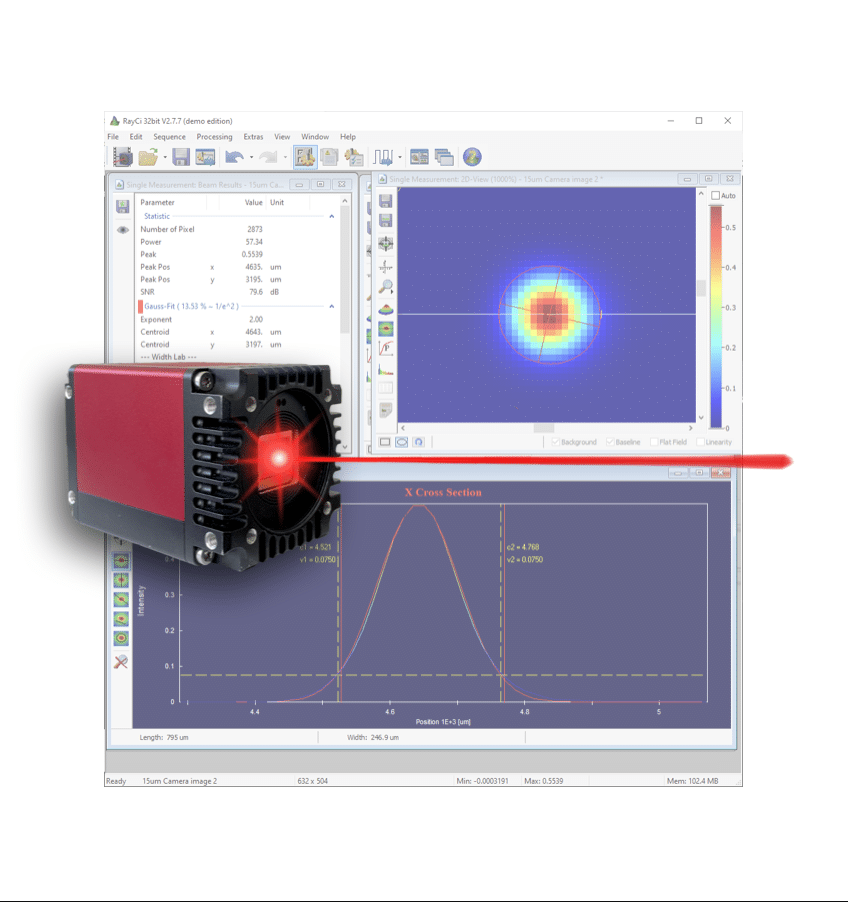Goldeye SWIR TE Cameras
Allied Vision’s Goldeye SWIR InGaAs cameras save you time and money. VGA and QVGA models with on-board image processing and TEC options. Goldeye cameras cameras are easy to integrate in your system. Plug-and-play solutions with GigE Vision PoE or CameraLink interfaces.
Allied Vision SWIR cameras are short-wave infrared cameras (SWIR) featuring InGaAs sensor technology making them sensitive in the short wave infrared spectrum ranging from 900 nm to 1,700 nm. The Goldeye SWIR InGaAs cameras are the perfect choice for demanding and cost sensitive industrial applications beyond the visible spectrum. They are available with either a Camera Link or a GigE Vision interface, and with TEC1 and TEC2 thermo-electric cooling, or TECless (without thermo-electric cooling) options.
Goldeye CL-008 TEC1 – Affordable high-speed QVGA
The Goldeye CL-008 TEC1 is one of the fastest QVGA resolution short wave infrared (SWIR) cameras with Camera Link interface. With frame rates up to 344 fps at full resolution, versatile application fields can be addressed and processes can be sped up strongly. Thanks to its very affordable price, many cost-sensitive applications, where the lower resolution is sufficient, can benefit from the camera’s outstanding performance.
Goldeye CL-032 TEC1- VGA with large pixel
The Goldeye CL-032 TEC1 is a very versatile SWIR camera for the spectral range from 900 nm to 1700 nm. High frame rates of 100 fps at full resolution (636 × 508), a strong sensor cooling, as well as a high intra-scene dynamic range of more than 73 dB enable to apply the camera in various application areas and under varying operating conditions.
Goldeye CL-033 TEC1 – High-speed VGA
The Goldeye CL-033 TEC1 high-speed camera is one of the fastest VGA resolution short wave infrared (SWIR) cameras with Camera Link interface. Frame rates up to 301 fps at full resolution enable you to access versatile application fields and to speed up your processes.
Goldeye CL-033 TECless – High-speed TECless VGA
The Goldeye CL-033 TECless high-speed camera is the fastest VGA resolution short wave infrared camera (SWIR) with Camera Link interface. Frame rates up to 301 fps at full resolution enable you to access versatile application fields and to speed up your processes. Thanks to its very affordable price, many cost-sensitive applications can benefit from the camera’s outstanding performance.
Goldeye CL-034 TEC1 – High-speed VGA
The Goldeye CL-034 TEC1 high-speed camera is one of the fastest VGA resolution short wave infrared (SWIR) cameras with Camera Link interface. Frame rates up to 303 fps at full resolution enable you to access versatile application fields and to speed up your processes.
Goldeye G-008 TEC1 – Affordable high-speed QVGA
The Goldeye G-008 TEC1 is the fastest 1/4-VGA resolution short wave infrared camera (SWIR) with GigE Vision interface. With frame rates up to 344 fps at full resolution, versatile application fields can be addressed and processes can be sped up strongly. Thanks to its very affordable price, many cost-sensitive applications, where the lower resolution is sufficient, can benefit from the cameras outstanding performance.
Goldeye G-032 TEC1 – VGA with large pixel
The Goldeye G-032 TEC1 is a very versatile shortwave infrared camera for the spectral range from 900 nm to 1700 nm. High frame rates of 100 fps at full resolution (636 x 508), strong sensor cooling, as well as a high intra-scene dynamic range of more than 73 dB enable to apply the camera in various application areas and under varying operating conditions.
Goldeye G-033 TEC1 – High-speed VGA
The Goldeye G-033 TEC1 high-speed camera is the fastest VGA resolution short wave infrared camera (SWIR) with GigE Vision interface. Frame rates up to 301 fps at full resolution enable you to access versatile application fields and to speed up your processes.
Goldeye G-033 TECless – High-speed TECless VGA
The Goldeye G-033 TECless high-speed camera is the fastest VGA resolution short wave infrared camera (SWIR) with GigE Vision interface. Frame rates up to 301 fps at full resolution enable you to access versatile application fields and to speed up your processes. Thanks to its very affordable price, many cost-sensitive applications can benefit from the camera’s outstanding performance.
Goldeye G-034 TEC1 – High-speed VGA
The Goldeye G-034 TEC1 high-speed camera is the fastest VGA resolution short wave infrared camera (SWIR) with GigE Vision interface. Frame rates up to 303 fps at full resolution enable you to access versatile application fields and to speed up your processes.
Save time and money to integrate the camera into your system: Goldeye SWIR InGaAs cameras come in a small form factor and with multiple mounting options let the camera fit easily into compact system designs. In addition, its standardized Camera Link interface including GenCP support and comprehensive I/O control options simplify the connection to your software solution and the synchronization with other system components.
The integrated thermo-electric sensor cooling and several on-board image correction features contribute to the Goldeye’s outstanding image quality.
New Allied Vision InGaAs cameras
New Goldeye G-130 TEC 1 and Goldeye G-030 TEC1 with Sony SenSWIR technology.
Click here for SWIR cameras applications to review.
Goldeye SWIR InGaAs Camera Applications
SWIR applications:
- Military / Defense (Imaging at long ranges and through obscurants (fog, smoke, mist, haze, rain…), Border security, Rocket missile tracking)
- Security & Surveillance
- Semiconductor inspection
- Photovoltaics (Electroluminescence for PV cells)
- Spectroscopy
Laser beam profiling applications with RayCi software:
- Laser beam analysis of CW and pulsed lasers
- Alignment of lasers in production
- Quick control of laser modes and adjustment errors
- Near-Field and Far-Field analysis of lasers
- Laser beam quality measurement M2
Goldeye SWIR InGaAs Camera Software
VIMBA SDK
Vimba is a comprehensive software suite:
- Acquire images and explore camera features without programming.
- Program your vision applications with C, C++, .NET or Python APIs.
- Connect to third-party libraries and frameworks.
Platform independent
Vimba 6.0 was tested with:
- Vimba for Windows 64-bit:
- Windows 10 (GigE, USB, 1394, and Camera Link cameras)
- Windows 11 (GigE, USB, and 1394 cameras)
- Vimba for Windows 32-bit:
- Windows 10 (GigE, USB, 1394, and Camera Link cameras)
- Vimba for Linux: Ubuntu 20.04 LTS (64-bit), Debian 11.2 (64-bit)
- Vimba for ARM64: NVIDIA Xavier NX with
- JetPack 4.6 (L4T 32.6.1) – GigE and USB cameras
From quick prototyping to sophisticated development
Vimba provides four APIs with extensive documentation and code examples:
The Python API is perfect for a quick and easy start or for prototyping.
The C API is Vimba’s basic and easy-to-use API. It can also be used as API for C++ applications.
The C++ API has an elaborate class architecture. It is designed as a highly efficient and sophisticated API for advanced object-oriented programming including the STL (standard template library), shared pointers, and interface classes. If you prefer an API with less design patterns, we recommend the Vimba C API.
The .NET API supports all .NET languages, for example, C#, C++/CLI, or Visual Basic .NET. Its general concept is similar to the C++ API.All APIs cover the following functions:
- Listing currently connected cameras
- Controlling camera features
- Receiving images from the camera
- Notifications about camera connections or disconnections
The Image Transform Library converts camera images into other pixel formats and creates color images from raw images (debayering). While this is separated for the C and C++ API, the .NET API includes these functions. Therefore, a .NET application does not have to access the Image Transform Library. The APIs use GenICam transport layer (GenTL) libraries to communicate with the cameras.
Third-party libraries compatibility
Vimba’s transport layers automatically connect to third-party software, for example, LabVIEW, MATLAB, OpenCV, Halcon, CVB, and many more.
Goldeye SWIR InGaAs Camera Software
VIMBA SDK
Vimba is a comprehensive software suite:
- Acquire images and explore camera features without programming.
- Program your vision applications with C, C++, .NET or Python APIs.
- Connect to third-party libraries and frameworks.
Platform independent
Vimba 6.0 was tested with:
- Vimba for Windows 64-bit:
- Windows 10 (GigE, USB, 1394, and Camera Link cameras)
- Windows 11 (GigE, USB, and 1394 cameras)
- Vimba for Windows 32-bit:
- Windows 10 (GigE, USB, 1394, and Camera Link cameras)
- Vimba for Linux: Ubuntu 20.04 LTS (64-bit), Debian 11.2 (64-bit)
- Vimba for ARM64: NVIDIA Xavier NX with
- JetPack 4.6 (L4T 32.6.1) – GigE and USB cameras
From quick prototyping to sophisticated development
Vimba provides four APIs with extensive documentation and code examples:
The Python API is perfect for a quick and easy start or for prototyping.
The C API is Vimba’s basic and easy-to-use API. It can also be used as API for C++ applications.
The C++ API has an elaborate class architecture. It is designed as a highly efficient and sophisticated API for advanced object-oriented programming including the STL (standard template library), shared pointers, and interface classes. If you prefer an API with less design patterns, we recommend the Vimba C API.
The .NET API supports all .NET languages, for example, C#, C++/CLI, or Visual Basic .NET. Its general concept is similar to the C++ API.All APIs cover the following functions:
- Listing currently connected cameras
- Controlling camera features
- Receiving images from the camera
- Notifications about camera connections or disconnections
The Image Transform Library converts camera images into other pixel formats and creates color images from raw images (debayering). While this is separated for the C and C++ API, the .NET API includes these functions. Therefore, a .NET application does not have to access the Image Transform Library. The APIs use GenICam transport layer (GenTL) libraries to communicate with the cameras.
Third-party libraries compatibility
Vimba’s transport layers automatically connect to third-party software, for example, LabVIEW, MATLAB, OpenCV, Halcon, CVB, and many more.
Goldeye Camera Applications
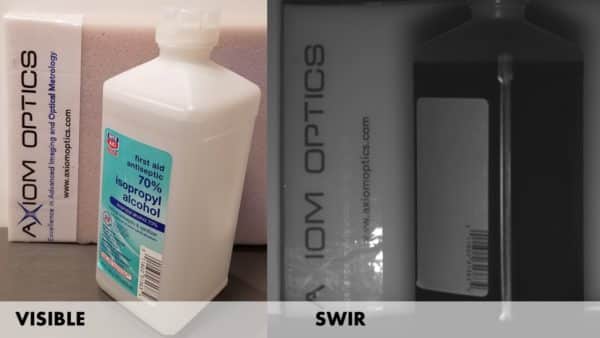
Alcohol
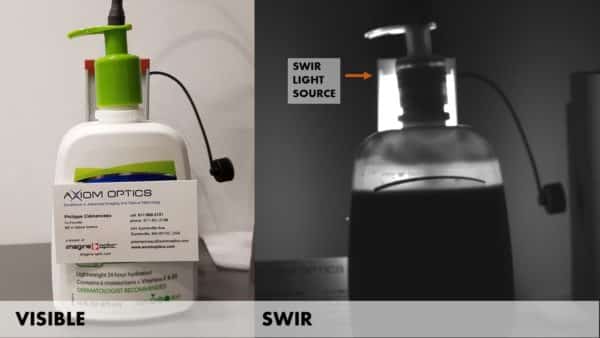
Oil and Water

